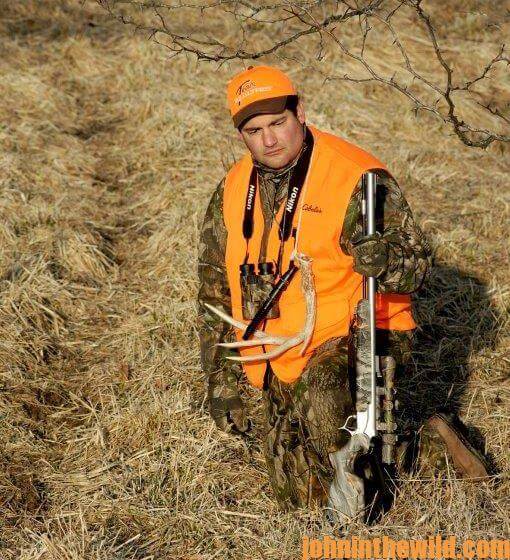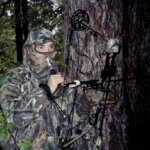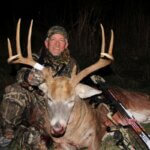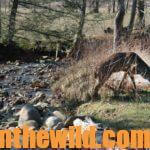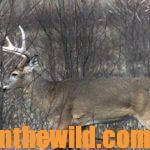Editor’s Note: Although the time is near the middle of February, several states still are having deer season. Next year, you can plan to hunt in Delaware, Texas, Rhode Island, Ohio, Louisiana, Pennsylvania and Maryland until the end of January. The states holding February deer hunts, include:
* my home state of Alabama with some sections of the state still in rutting season. Alabama’s deer season ends in mid-February;
* Mississippi, where you can hunt with primitive weapons (archery and muzzleloaders) until mid-March, in parts of the state;
* Florida’s Panhandle where deer season lasts until February 23;
* Arkansas with a season ending the end of February; and
* Virginia with its urban archery hunts primarily on private lands to try to reduce suburban yard damage and deer-car collisions that doesn’t end until March 29th.
 Some years ago, I asked Dr. Larry Marchinton, retired professor of wildlife sciences at the University of Georgia, who has studied and researched white-tailed deer for years, “If you only could pick one area where you think your odds were best for taking a buck, what would that area be like, and why would you pick that one site?” Marchinton didn’t hesitate when he answered, “To take a buck at any time of the year, your odds are best when you’re hunting a funnel.”
Some years ago, I asked Dr. Larry Marchinton, retired professor of wildlife sciences at the University of Georgia, who has studied and researched white-tailed deer for years, “If you only could pick one area where you think your odds were best for taking a buck, what would that area be like, and why would you pick that one site?” Marchinton didn’t hesitate when he answered, “To take a buck at any time of the year, your odds are best when you’re hunting a funnel.”
Often funnels will have two or three trails going through them. But, you want all the deer that travel through the funnel to come down one trail. Solve this problem by creating a funnel-shaped barrier across the two trails that you don’t want the deer to walk down and forcing them onto the trail where you do want them to walk. Just finding a funnel doesn’t insure that you’ll get a shot at a buck. Oftentimes you have to create a funnel inside a funnel to force the deer to come into range. Create these funnels before the season starts to allow deer to become accustomed to walking through that 30-yard stretch of ground where you want to arrow them. Not all funnels look alike. You may hunt over a funnel and not realize it. For instance, at a creek crossing, you’ll often find a funnel at the spot where the creek narrows, and there’s shallow water. Deer on both sides of the creek will move back and forth across the creek at this same spot.
 I once discovered a trail deep in the woods that went across a beaver swamp. In high water, the deer would have to walk 50 or 60 yards across open water to get from one side of the swamp to the other. Few other hunters had found this trail. To learn why the deer crossed the water at that spot in the flooded timber, I saw old beaver dam that formed a ridge there that went across the bottom of the swamp. When the river flooded, and the swamp filled with water, you no longer could see the beaver dam now underwater. The deer on both sides of the flooded timber could walk across that beaver dam to reach either side of the woodlot. This beaver dam created a funnel area where most of the deer crossed the water in non-pressured times.
I once discovered a trail deep in the woods that went across a beaver swamp. In high water, the deer would have to walk 50 or 60 yards across open water to get from one side of the swamp to the other. Few other hunters had found this trail. To learn why the deer crossed the water at that spot in the flooded timber, I saw old beaver dam that formed a ridge there that went across the bottom of the swamp. When the river flooded, and the swamp filled with water, you no longer could see the beaver dam now underwater. The deer on both sides of the flooded timber could walk across that beaver dam to reach either side of the woodlot. This beaver dam created a funnel area where most of the deer crossed the water in non-pressured times.
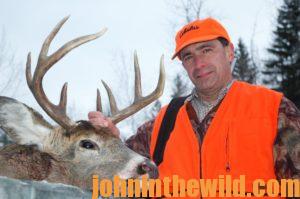 Low places in mountains also will create funnels as well as any other type terrain break that causes the deer to use less energy to get from one place to the other. If a bridge crosses a creek with relatively-shallow water, or the land under the bridge is above water, deer often will walk under the bridge to move from one woodlot to another, instead of going across the road or the highway.
Low places in mountains also will create funnels as well as any other type terrain break that causes the deer to use less energy to get from one place to the other. If a bridge crosses a creek with relatively-shallow water, or the land under the bridge is above water, deer often will walk under the bridge to move from one woodlot to another, instead of going across the road or the highway.
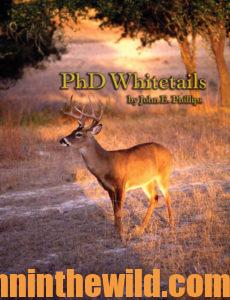 To learn more about hunting for deer, check out John E. Phillips’ deer-hunting book, “PhD Whitetails: How to Hunt and Take the Smartest Deer on Any Property,” available in Kindle and print and soon to be available in Audible at http://amzn.to/WIEUoo. You may have to copy and paste this link into your browser. (When you click on this book, notice on the left where Amazon says you can read 10% of the book for free).
To learn more about hunting for deer, check out John E. Phillips’ deer-hunting book, “PhD Whitetails: How to Hunt and Take the Smartest Deer on Any Property,” available in Kindle and print and soon to be available in Audible at http://amzn.to/WIEUoo. You may have to copy and paste this link into your browser. (When you click on this book, notice on the left where Amazon says you can read 10% of the book for free).
Tomorrow: Finding Deer Hunting Success at Funnels



